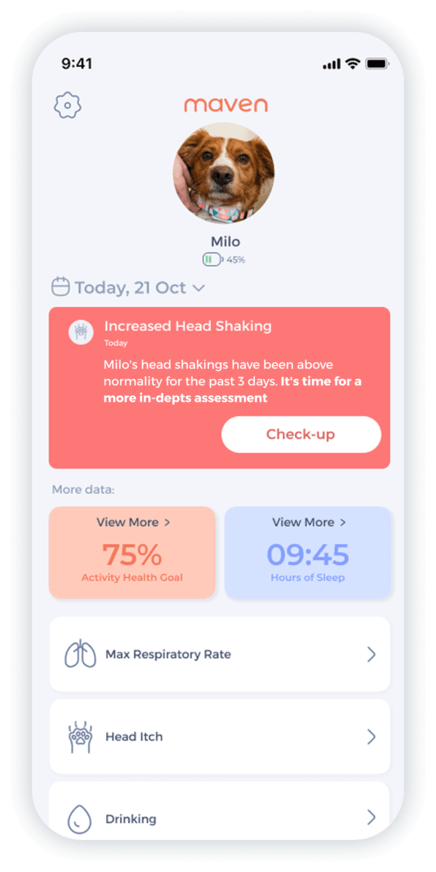Seasonal Allergies in Dogs: Fall vs Spring (Vet Verified)
If you’re a dog parent, you’ve likely noticed it: once the seasons change, your normally happy pup starts scratching, nibbling their paws, or shaking their head a little too much. This discomfort is often a sign of seasonal dog skin allergies, a frustrating condition that can significantly impact their quality of life.
This guide, supported by vet principles, will break down the distinct triggers of spring versus fall allergies and provide you with actionable, vet-verified advice on safe relief and how to track symptoms effectively.
Key Takeaways
- Seasonal allergies are an overreaction of your dog’s immune system to environmental triggers like pollen or mold.
- Fall triggers differ from Spring triggers.
- The main symptom of allergies in dogs is intense itching, which leads to excessive licking, paw chewing, and recurrent ear infections.
- Home remedies can alleviate symptoms, but always consult your vet for persistent symptoms.
- Use a dog health tracker to detect an allergy flare-up before it becomes severe.
What Are Seasonal Allergies in Dogs?

Seasonal allergies in dogs are an overreaction by your dog’s immune system to harmless substances in the environment.
Unlike humans, who often get watery eyes and sneezes, dogs typically manifest allergic reactions through their skin.
The body releases histamines and other chemicals in response to an allergen (such as pollen or mold), leading to inflammation and, most commonly, intense itching.
Fall vs Spring Allergies: What’s the Difference?
It’s true that the symptoms of seasonal allergies in dogs usually look the same, but the common triggers change drastically between the two main seasons. Knowing the difference can help you anticipate and mitigate your dog’s exposure.
- Spring Allergies:
- Peak Season: Late winter through early summer.
- Primary Triggers: Tree pollen (oak, cedar, birch) and grass pollen.
- Fall Allergies:
- Peak Season: Late summer through early winter.
- Primary Triggers: Weed pollen, most notably ragweed, which is a highly potent allergen. Mold and mildew are also significant, thriving in fallen leaves, damp soil, and wet environments as temperatures cool.
“I got the Maven sensor for my 14-year-old Chihuahua mix with heart and trachea issues. It gave me back peace of mind – I can track her RRR, BPM, drinking, and activity anytime and know instantly if something’s wrong. Highly recommend!”

★★★★★
Chiara De Luca
Titti
Common Symptoms: From Dog Itchy Skin to Ear and Paw Problems
How can you tell if your dog’s discomfort is due to seasonal allergies? The reaction often targets specific, sensitive areas of the body.
Pay attention to the most common signs of a flare-up:
- Excessive itchy skin
- Excessive licking and chewing
- Red, waxy, or smelly ears (caused by chronic infections fueled by allergies)
- Facial rubbing
- Red and inflamed skin in the armpits, groin, or between the toes
If your dog’s skin is broken, crusty, or has a strong odor, it may have developed a bacterial or yeast infection, which requires immediate veterinary attention.
Home Remedies for Seasonal Allergies in Dogs
Before jumping to medication, there are several safe, simple home remedies and actions you can implement to reduce allergen load and soothe discomfort.
- The wipe-down method: After every walk or outdoor excursion, use pet-safe hypoallergenic wipes to thoroughly wipe down your dog’s paws, belly, and muzzle. This physically removes the allergens before they have time to settle on the skin.
- Chamomile or green tea soak: The soothing properties in these teas can provide relief. You can fill a basin or tub with warm water and steep tea bags or apply the cooled tea bag to the skin.
- Oatmeal baths: use oatmeal pet shampoos or commercial oatmeal bath packets in a bath one to two times a week.
- Omega Fatty Acids: Supplementing with high-quality Omega-3 fatty acids can support skin barrier health and reduce inflammation. Make sure to talk to your vet before adding supplements to your dog’s diet.
- Environmental Control: Use a high-efficiency particulate air (HEPA) filter in your home, especially in the rooms where your dog spends the most time. Vacuum regularly with a HEPA-filtered vacuum.
When to See a Vet for Allergy Symptoms

Home remedies can provide minor relief, but they’re not a substitute for veterinary care. You should book an appointment if:
- Symptoms persist for more than a few weeks despite home care.
- The itching is so severe it disrupts your dog’s eating, playing, or rest.
- Your dog develops secondary infections (red, oozing, or smelly skin/ears).
- Your dog’s quality of life is visibly diminished.
Your vet can conduct tests, rule out other causes of itching (like fleas or food allergies), and prescribe targeted treatments, which may include anti-itch medications, steroids, or allergy injections/drops.
How the Maven Pet Health Monitor Helps Track Allergy-Related Behavior
“Seasonal allergies are one of the most common causes of itching in dogs – and knowing whether it’s fall or spring allergens helps guide the right care. Owners can help tremendously by minimizing exposure and tracking symptoms to know when to seek medical help.” — Joana Babo, DVM, Veterinarian at Maven Pet
Tracking symptoms helps you understand the severity of your furry friend’s allergies. The best way to ensure you don’t miss any signs, no matter how small, is using a pet health tracker like the Maven Pet Health Monitor.


Monitor heart rate, respiratory rate, activity & rest, drinking, itch behavior.
The monitor can help you by:
- Identifying Behavioral Shifts: Allergies disrupt a dog’s comfort. The monitor tracks patterns in activity, rest, and sleep quality. A sudden, unexplained drop in a dog’s rest score or an increase in unusual nighttime activity could signal that itching is preventing sound sleep.
- Monitoring Relief Effectiveness: After starting a new medication or implementing home remedies, the monitor provides objective data through Maven’s pet health app. You can see if a prescription or management change results in better quality sleep or a return to normal activity levels.
- Informing the Vet: Having precise data on when changes occurred provides your vet with crucial specific information that is much more reliable than subjective observation alone.
Takeaways Recap
- Seasonal allergies are a primary cause of itchy skin in dogs, which manifests as excessive scratching, licking, and secondary ear or paw infections.
- The difference between seasons lies in the triggers: Spring allergies are dominated by tree and grass pollen, while Fall allergies are often triggered by potent ragweed and environmental molds.
- Effective home remedies for seasonal allergies in dogs include regular bathing with oatmeal, chamomile or green tea soaks, and using pet wipes to remove allergens after being outdoors.
- Omega-3 fatty acids can help support the skin barrier, but always consult your vet before introducing supplements.
- Persistent or severe symptoms require a veterinary visit for proper diagnosis and prescription treatment.
- Using a pet health tracker like the Maven Pet Health Monitor helps you identify subtle changes in rest, activity, and sleep quality that signal an early allergy flare-up or confirm the effectiveness of current treatment plans.
Maven Pet focuses on improving the quality of life of our pets with technology, using artificial intelligence (AI) to enable proactive pet care. By accurately collecting and monitoring pet data 24/7 and flagging any irregularities, Maven Pet empowers pet parents and veterinarians to stay ahead of potential health issues, ensuring the well-being and longevity of our beloved companions.




